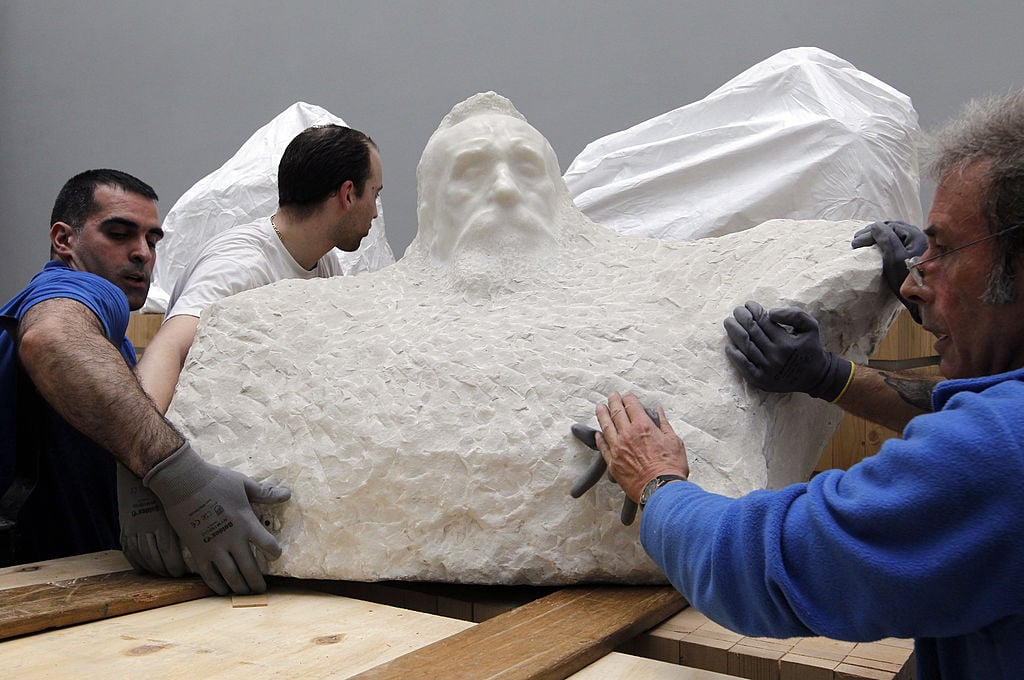
Paris’s Musée Rodin has announced that it will lend its name and send works to a Chinese art center dedicated to the French sculptor in the southern city of Shenzhen. The decision to join forces with the local Chinese government as Beijing threatens to crack down on the pro-democracy movement over the border in Hong Kong is bound to raise eyebrows.
News of the partnership emerged on Monday, October 7, during a Franco-Chinese cultural forum in the city of Nice. The Paris institution dedicated to Auguste Rodin has agreed to sell around 50 bronze editions of Rodin’s work to the new institution. It is also loaning around another 50 works for at least five years, though the exact numbers are not yet set in stone.
Called the Rodin Art Center, the new institution is being funded by the city of Shenzhen and the Futian district, a spokesperson for the Musée Rodin tells artnet News. It will be built over the next two or three years, they confirm.
“Since 2014, the Musée Rodin has been approached many times by Chinese cities or Chinese companies to form a Rodin collection in China,” the spokesperson explains. “But often these companies had very commercial projects with not enough cultural, educational, or philanthropic projects, and so the Rodin Museum refused them.”
Rodin enjoys a huge profile in China, on par with the writers Honoré de Balzac and Victor Hugo, according to the spokesperson. The planned art center will, no doubt, highlight Rodin’s interest in Chinese art, which he collected. He also inspired significant Chinese sculptors, including Sui Jianguo.
Musée Rodin. Photo via:Wikimedia Commons
The full cost and a specific opening year of the Rodin center have not been confirmed, but the museum says that more details will emerge during President Emmanuel Macron’s planned trip to China next month. The decision to move forward with the project, which was first mooted last June, comes after officials from the Paris museum toured different Chinese cities. Besides Shenzhen in the Guangdong province, which borders Hong Kong and Macau, they visited Hangzhou in Zhejiang province and Xiong’an New Area, southwest of Beijing in Hebei province.
“Shenzhen seemed to us to be the [city] with the most important assets: a political will in favor of culture and education, very professional and efficient teams, both in the city and in the Futian District,” the spokesperson says, adding that its multicultural character is another asset. In a statement, the museum confirms that the site of the planned art center is on Antuoshan Hill in Shenzhen.
The museum spokesperson says that the institution was “cautious” in selecting from the several Chinese proposals they had received from different cities and organizations. However, following demonstrated support from the Chinese ministry of culture as well as the Chinese embassy in France, the Musée Rodin gave the green light to the project.
France is at the forefront of Western museums’ expansion in China. The Centre Pompidou is set to finally open a satellite in Shanghai on November 8, after years of trying. Its museums are also increasingly entrepreneurial, like their UK counterparts. Shenzhen is already home to a design museum created in partnership with the Victorian and Albert Museum in London.
The Musée Rodin was founded to house the collection that Rodin donated to the French state after his death. It includes his own sculptures and drawings, as well as work produced by his contemporaries. The Musée Rodin in central Paris and his home in Meudon attract around 700,000 visitors a year.